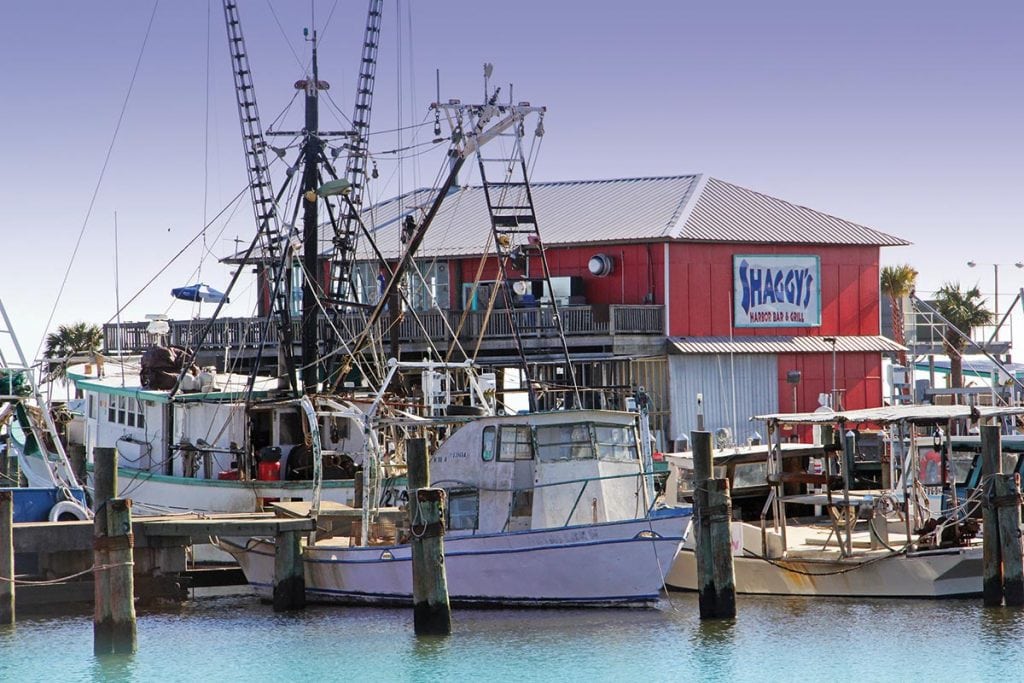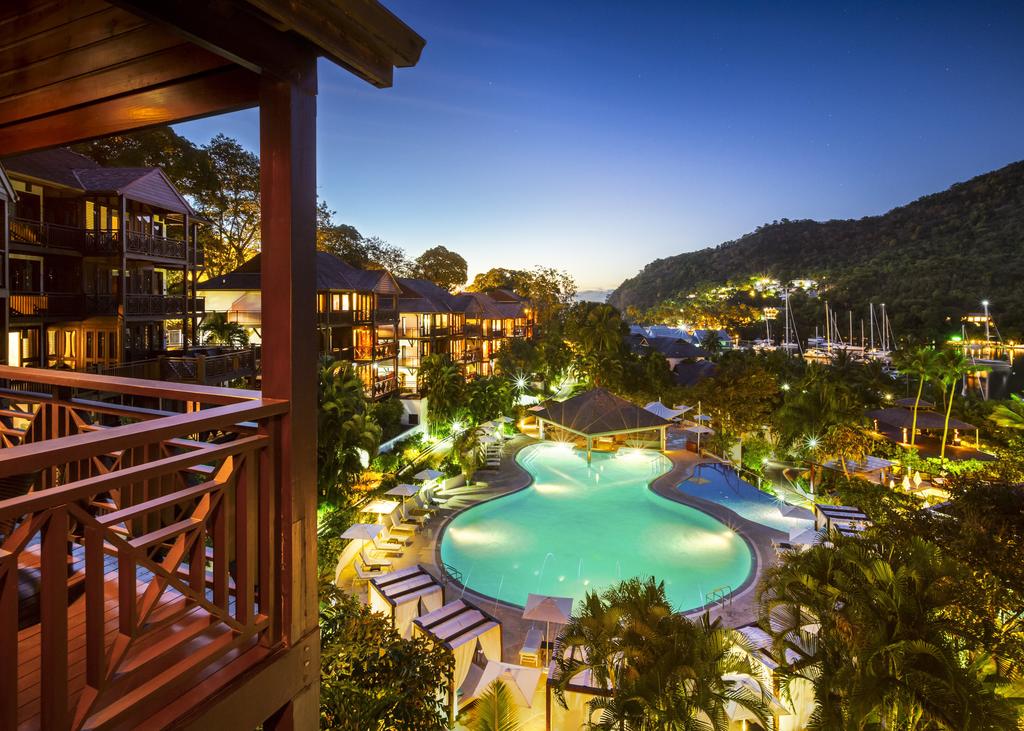A Place Apart
Bay St. Louis, Mississippi, is one of those idyllic, sleepy little Gulf Coast towns where the mesmerizing sound of the L&E Railroad’s horn and the breeze crossing the bay seem to continue forever. A town of well-used porch swings cradle neighbors who chat as condensation drips from their grandmother’s heirloom crystal rocks glasses, while the cicadas call out from the deep southern evening. White sand spills and shifts from beaches onto the roads that follow this seemingly endless coast—most of which are shaded by sprawling two-hundred-year-old oaks that easily outnumber the citizens. All roads lead to the bay.
Founded in 1699 by French explorers and slated to become the state capital of Mississippi in the 1800s before passed over for Natchez and then Jackson, Bay St. Louis quietly fronts the western shore of its namesake bay. A shallow estuary that opens onto the Mississippi Sound and the Gulf of Mexico, the bay and surrounding waters hold incredibly fertile oyster beds, shrimping grounds and diverse fishing, all protected by a run of small sandy barrier islands that make up the Gulf Islands National Seashore. Located a quick cruise off shore, these islands are home to the remnants of Spanish forts—the staging grounds for the British invasion of New Orleans in the War of 1812—and were notoriously used by pirates, privateers and smugglers throughout most of their history. As recently as the 1980s hidden booty was unearthed on these Mississippi islands.
Bay St. Louis was built on a small bluff and has been rediscovered as an arts community full of old-world southern characters. Take the time to chat with them. It’s likely you’re talking with a descendant of the only President of the Confederacy, or a renowned artist inspired by Walter Anderson, or a charter captain whose family arrived with the French or Spanish—the first who cruised this coast. Like most towns on the northern Gulf Coast, the “coasties” are somewhat removed from their rural northern neighbors and even host their own coastal accent.
Bay St. Louis’ Main Street leading off the bay is populated with art galleries and quaint antique and brica-brac shops, with the shopkeepers walking home in the light evenings along perfectly lush gardens fronting shotgun, Biloxi cottages, Sidehall, and West Indies Planter-style homes. Along the bay, the steeple of Our Lady of the Gulf Church is the boating landmark that rises next to St. Stanislaus College—founded by the Brothers of the Sacred Heart in 1854—which hosts an exceptional high school sailing program.
Bay St. Louis is a strolling town, so explore. Browse the independent bookseller Bay Books, and pick up a few titles on the forgotten history of this coast. Grab coffee and a muffin next door at the little hole-in-the-wall bakery Serious Bread, or stroll down to the Buttercup or the Mockingbird Cafe and enjoy their verandas for brunch and light reading. Spend the afternoon walking the quiet residential streets and remember to wave back to the residents—you are in the Deep South where hospitality is as natural as breathing.
On lazy afternoons the porches and verandas come alive as the cooling bay breeze fills. Sailors gather on the decks of the Bay-Waveland Yacht Club to cocktail as they have been doing since it was founded in 1896. The balconies and bay tables at Trapani’s and 200 North Beach fill early as the sun sets and locals sip on Southern Pecan Ale from the local brewery Lazy Magnolia while awaiting their seafood dishes landed earlier that day. Both restaurants overlook the recently constructed, state-of-the-art 163-slip municipal marina, built specifically to provide transient cruisers walking access to the heart of town and can host up to 60′ boats.
[photomosaic type=”rectangular” ids=”4874,4875,4876,4877,4878,4879,4880,4881,4882,4883,4884,4885,4886″]
A few blocks away on Blaize Street, the once neglected back of the town has become a small, gentrified strip of bars and nightlife located in 19th-century buildings with renovated condos above many. Spend a few hours after dinner at Coach Mike’s on the sidewalk tables and get to know the locals. No one would ever say Bay St. Louis has become bustling, but no one would want it that way.
Across the narrow bay is Pass Christian and home to the one of the five oldest yacht clubs in the U.S., the Pass Christian Yacht Club. The “Pass” originally served as a summer retreat for wealthy bankers and cotton brokers from New Orleans, as well as planters from northern Mississippi. Grand mansions along the beaches were built as an escape from the heat and yellow fever epidemics. The Pass is still a second home to many from New Orleans and the rural north.
Bearing part of the brunt of Hurricane Katrina in 2005, the Pass has made a steady comeback. So much architectural history was lost, but what remains is astounding. The sugar sand beaches Walker Percy wrote about while describing daytrips by his characters are there and awaiting quiet walks back into history. Miles of mature oaks and antebellum mansions line the shore, while to the south lie the coastal islands, the Gulf of Mexico and Cuba—waters sailed by William Faulkner and poet Eudora Welty on occasion.
This coast’s history and descendants still live and reside on these waters traversed by European explorers not so many generations ago. Many of the locals hold that lineage and have their family’s oral history to prove it. They also still ply the waters of the Mississippi Sound and the Gulf, albeit now for a different bounty—blue crab, shrimp and oysters. The marina at Pass Christian is a pure example of this as the crab boats come home; their wares are sold directly to restaurants like Shaggy’s in the marina or the more upscale fine dining of Wolfe’s.
Within an hour’s cruise is Beauvoir, the prior home of and current museum dedicated to Confederate President Jefferson Davis, as well as the Biloxi Maritime Museum. Fort Massachusetts—renamed by Union soldiers and used to house Confederate prisoners of war—is a massive Spanish fort rising from Ship Island in the Gulf that runs regular tours. Since the storm, world-class golf courses and casinos have also been constructed on this stretch of the Mississippi Coast—many with docking facilities—including the newest addition, native son Jimmy Buffett’s Margaritaville Casino.
Over 300 years after its founding, Bay St. Louis is still the charming little town on a bluff waiting for you to listen to the enchanting sounds of the southern twilight over the bay. Relax on a deck surrounded by gardens of azaleas, plumbago and centuries-old oak trees with white sand brushing at their feet as the breeze lifts off the bay and the shimmering water beckons you to stay awhile.
By Troy Gilbert, Southern Boating February 2014














